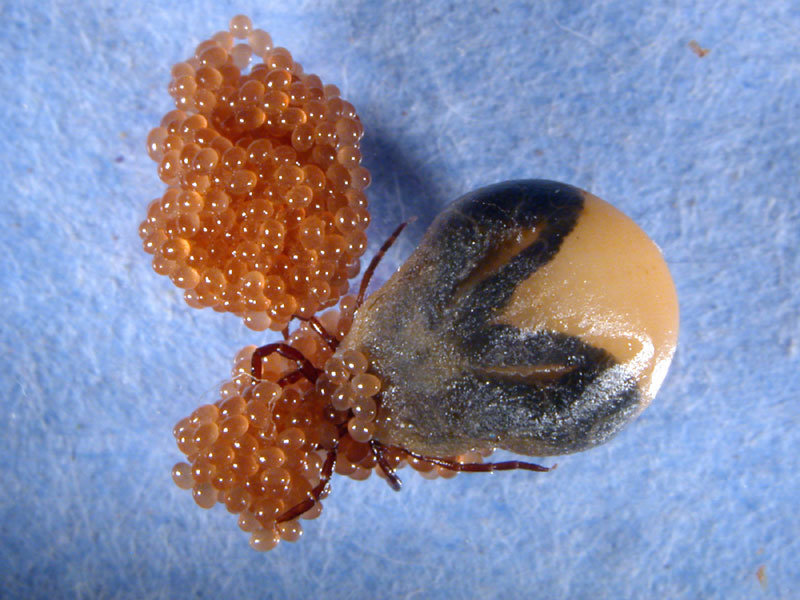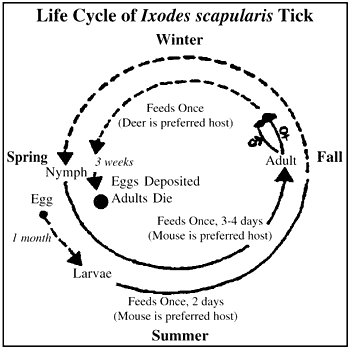Ixodes scapularis - Deer Tick
Let’s talk about sex
The deer tick has three stages in their life: Larvae, nymphs, and adults. The life cycle of the deer tick starts when the female lays eggs. A female deer tick normally lays about 2,000-3,000 eggs. Those eggs then mature into larvae, then nymphs, and finally adults.
Larvae
-Larval ticks are interesting because they only have six legs (not a characteristic of Arachnids). Larvae usually hatch from May to September during what we call 'tick season'. They will feed once, drop off their host and then go into a dormant phase until the next spring. Their peak activity is reached in August. Larval ticks cannot be infected with Lyme's Disease from birth.
Nymphs
-In May of the next spring, the larval ticks molt into nymphs. In this stage of development, the tick develops the last pair of legs making them a true Arachnid. The nymphs will feed on their host, drop to the forest floor and become dormant again. Peak activity season of Nymphs is from late May through July.
Adults
-Adult deer ticks, like nymphs and larvae, also look to find a host to feed on. This final blood meal allows them to mate and reproduce. Females attach to a larger host than they had in the first two stages of development (for example a deer or a human) and can feed for up to one week. Adult males will feed here and there. Mating can take place on the host, but this is not necessary for reproduction and quite frankly is a little rude! The temperature must be higher than 45ºF for the ticks to be active and for the mating to take place. The mating process is necessary for the completion of the blood meal. After mating and becoming engorged, the female will drop off the host and lay her eggs under the leaves in the early spring. After laying her eggs, the female tick will die. Adult deer ticks have two peak activity seasons. One is in late October and early November and the other occurs in March and early April.

